With its pristine natural beauty, Binh Lieu mountainous district in the northern province of Quang Ninh is known as an attractive destination for adventurous tourists.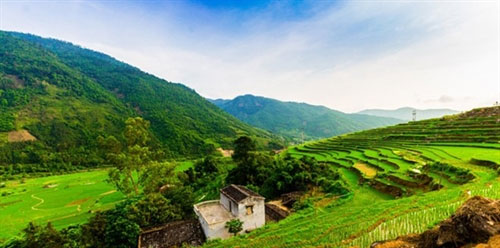
Serenity: A terrace field on the way to Khe Van Waterfall. Photos binhlieu.com
One of its destinations that not many people have discovered is Khe Van Waterfall in Huc Dong Commune.
Visitors will be impressed by the imposing three-storey waterfall, especially in the rainy season from May to August when the white water flow forms picturesque scenery.
Khe Van Waterfall is 12km to the southeast of Binh Lieu Town.
On the winding road to Huc Dong Commune, which looks like silk ribbons wrapped around the mountains, are beautiful paddy fields of the Tay ethnic people.
From the parking lot a 3km path through the forest leads to the waterfall.
Discover the waterfall
The waterfall is 100m high. The water runs from the Khe Van–Thong Chau mountain range 1,000m above sea level, creating three separate water layers.
Each has unique features.
The top one is the large stream of water flowing from the cliff down to a large lake. Flowers and grass on the cliff enhance the view. A complex of imposing angled stones scattered under the water creates an amazing natural landscape.
The second layer of water is divided into two small waterfalls running beside each other. One flows down to streams and a wide lake. The large and flat stones are ideal places to rest and have a sunbath. This lake is a natural swimming pool inviting tourists to immerse themselves in the cool, fresh water.
Khe Van Waterfall is not only picturesque, it also has a cultural aspect. It’s where San Chi and San Diu ethnic couples go on dates and sing soong co (folk songs of their groups). These ethnic groups believe that the fourth day of the forth lunar month is not a favorable day for any work. If they plant trees, the trees will not blossom or if they build a house, the house will collapse. They set aside all work and go out to have fun at the area’s waterfalls, lakes and streams.
Despite the site’s beauty and ethnic interest, tourism hasn’t developed there and visitors can only sleep at homestays.
On the other hand, the site still hold onto its pristineness and attracts backpackers.
They stay in local residents’ houses, enjoy their singing and local food such as grilled fish (caught in the streams) and boild snails and crabs (caught in the mountains). At night, young backpackers gather around bonfires. After singing and dancing, the host will offer them boiled buffalo horn-shaped cakes. The guests can join the local women in wrapping this cake. It’s not too difficult. The stuffing includes mung bean and sticky rice. People use bamboo leaves to wrap them and then boil the cakes to fete hungry tourists at midnight.
Located in the eastern part of Quang Ninh Province and bordering China, Binh Lieu District attracts travellers with its wild beauty, serenity and diverse ethnic culture of groups such as Tay, San and Dao.
Trekkers can choose different routes to discover the mountainous region. Many ride motorbikes and go trekking to enjoy the spectacular view and visit landmarks along the border and the Hoanh Mo Border Gate. Some border markers are placed on the road and easy to find, others are hidden on mountains and fields.
Pham Van Hai has discovered all the border landmarks in Binh Lieu District and says the experience is worth a try.
“They are not only stone pillars,” says Hai. “We all feel the solemn sovereignty of the country when we stand beside them. Many people have fallen to protect each inch of soil.”
Hai says a must-see destination for trekkers is Dinosaur’s Backbone where marker No 1305 is placed. “The path is very challenging for us but the reward is lavish,” he said. “The landmark is immersed in cloud and so are we. And the panoramic view of the border area is so wonderful.”
Authorities of Binh Lieu District are reportedly planning to develop local tourism. All information about Binh Lieu tourism is now available on http://binhlieu.com.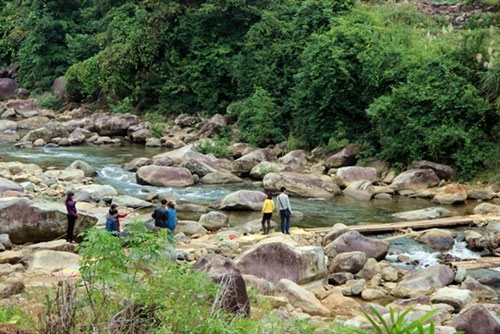
Backpackers abound: Water runs from Khe Van Waterfall to a stream of rocks.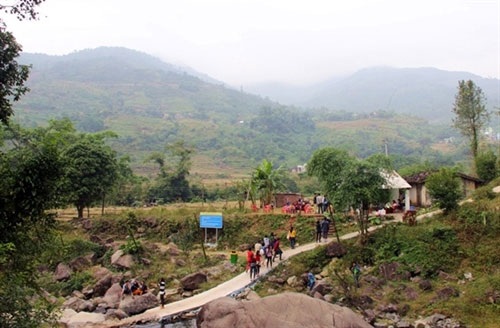
For lovers, too: From the parking area, tourists have to walk along a 3km path to reach the waterfall.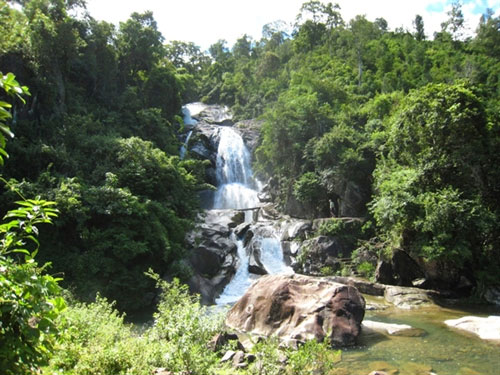
Unique features: The water runs from Khe Van–Thong Chau mountain range 1,000m above sea level creating three separate water layers. 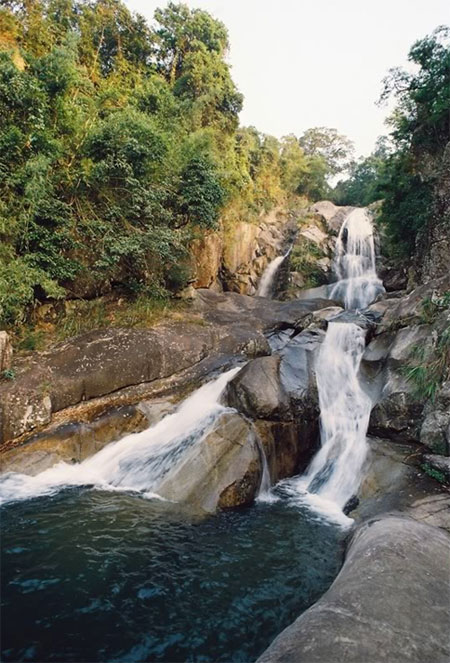
Three water layers: The water runs from Khe Van–Thong Chau mountain range 1,000m above sea level.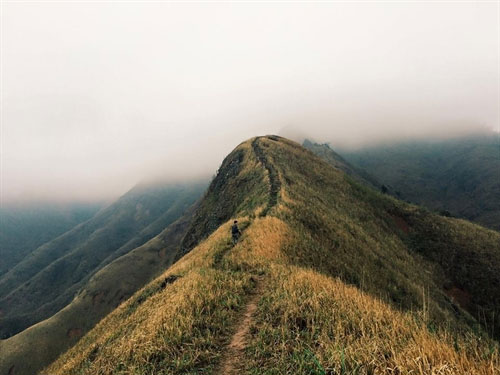
Must-see destination: Dinosaur’s Backbone, an ideal place for backpackers on Cao Ba Lanh Mountain.
Minh Duc / VNS